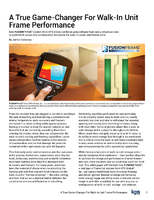Digia Unveils Powerful New Qt 5 Functionality for Embedded System Developers
Qt 5 application & UI development framework demonstrated with embedded hardware and OS at Embedded World
Nuremberg, Germany — At Embedded World Digia unveiled several applications of the newly announced Qt 5 cross-platform application and user interface (UI) development framework that are specifically targeted at creators of embedded systems. Demonstrations on a variety of hardware platforms and operating systems – including Raspberry Pi, Freescale i.MX6, Embedded Linux, QNX Neutrino, Android and Windows – revealed the power and versatility of Qt 5 and how it can be used to create native applications that are easily portable to other platforms.
Qt is an open source framework developed and maintained by Digia and the Qt Project. It enables developers to realise applications and companies to create their own software ecosystems fast. Qt enables the creation of the type of rich graphics and smooth animations that users increasingly expect, as well as rigorous and complex applications with intuitive UIs. And, because the applications are native to their respective systems, they extract the maximum performance from the underlying hardware.
Demonstrations included:
•Â Â Â Â Â Â Â Â Qt 5 on Raspberry Pi – the Scene Graph function in the Qt Quick 2 UI creation kit provides unparalleled rendering performance on constrained hardware platforms
•Â Â Â Â Â Â Â Â Qt 5 on the QNX platform - Cinematic Experience – collects many of the new Qt 5 Qt Quick 2 features into the same user experience demo application including particles, sprites path animation and custom shaders
•Â Â Â Â Â Â Â Â Qt 5 on Embedded Linux Smart Home Control – household elements including heating, blinds, windows and lighting are controlled in response to changes in weather conditions, which can be adjusted within the system
•Â Â Â Â Â Â Â Â Qt on an Android Base Layer – A demonstration of a Qt application running on an Android base layer, which puts Qt on top as a graphical interface with the goal to make embedded development on Linux as seamless as possible.
•Â Â Â Â Â Â Â Â Automotive 3D human-machine interface (HMI) – QML and Qt OpenGL C++ API enable easy leveraging of 3D technologies and OpenGL hardware acceleration
•Â Â Â Â Â Â Â Â Qt on VxWorks - VxWorks 6.9.2 on Mistral OMAP 3 EVM showing an interactive 3D desktop using OpenGL ES2 graphics
Key benefits of Qt 5 include: graphics quality; performance on constrained hardware; cross-platform portability; support for C++11; HTML5 support with QtWebKit 2; a vastly improved QML engine with new APIs; ease of use and compatibility with Qt 4 versions.
Qt’s ability to deliver impressive graphics has been enhanced with the use of OpenGL ES (the version of the graphics application programming interface designed specifically for embedded systems and mobile devices). This makes it easier to develop and deploy rich graphics with velvet-like animations and transitions as well as smoothly-rendered 2D and 3D animations on high-end architectures as well as on devices with relatively limited performance, such as mobile phones, tablets and low-cost development platforms including Raspberry Pi.
Cross-platform portability is made even simpler in Qt 5 due to a new modularized code base, consisting of essentials and add-on modules, which enable the system code size to be reduced. The consolidation of the Qt Platform Abstraction layer also emphasizes cross-platform portability by enabling the ease of development for multiple-target deployment, bringing freedom to the developer.
Qt supports embedded operating systems including Embedded Linux, Windows Embedded and the most widely deployed real-time operating systems for embedded devices – Wind River VxWorks, QNX Neutrino and Green Hills Software INTEGRITY – together with all major desktop operating systems (including Windows, Mac OS X and Linux) and popular mobile OSes.
About Qt
Used by over 500,000 developers worldwide, Qt is a full framework that enables the development of powerful, interactive and platform-independent applications. Qt applications run native on desktop, embedded and mobile host systems, enabling them to deliver performance that is far superior to other cross-platform application development frameworks. Qt’s support for multiple platforms and operating systems allows developers to save significant time related to porting to other devices.
About Digia, Qt
Digia is responsible for all Qt activities including product development and commercial and open source licensing. Since March 2011, Digia Plc, the Helsinki-based services and consulting powerhouse listed in the NASDAQ OMX Helsinki exchange (DIG1V) has been the commercial licensor of Qt. In September 2012 Digia acquired the full Qt business from Nokia. Digia operates in China, Finland, Norway, Russia, Sweden and USA.
Digia has in-depth Qt expertise and experience from demanding mission-critical development projects and hundreds of in-house certified Qt developers. We have helped leading industry players worldwide deploy Qt-based projects in the desktop, embedded and mobile space.
Digia’s goal is to provide desktop, embedded and mobile developers and companies with the most powerful cross-platform UI and application framework. Together with its licensing, support and services capabilities, Digia, Qt operates with the mission to work closely with developers to ensure that the projects are deployed on time, within budget and with a competitive advantage. http://qt.digia.com
Contact:
Digia, Qt
Katherine Barrios +47 95 14 64 14 Katherine.barrios@digia.com
Ref: DQ036/A




